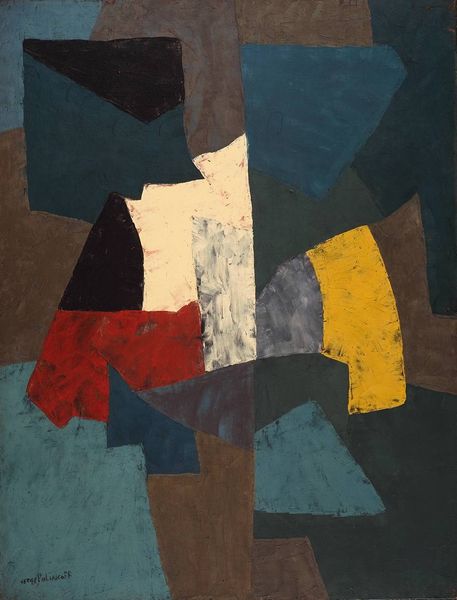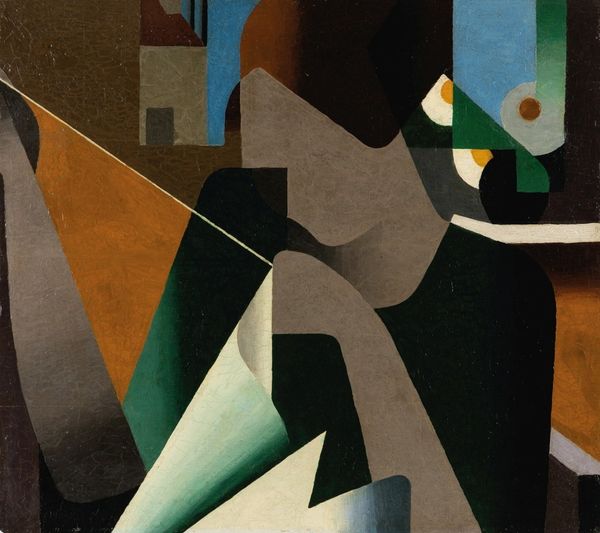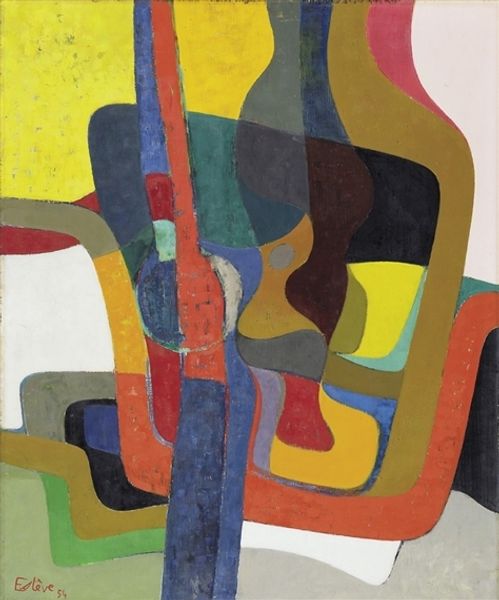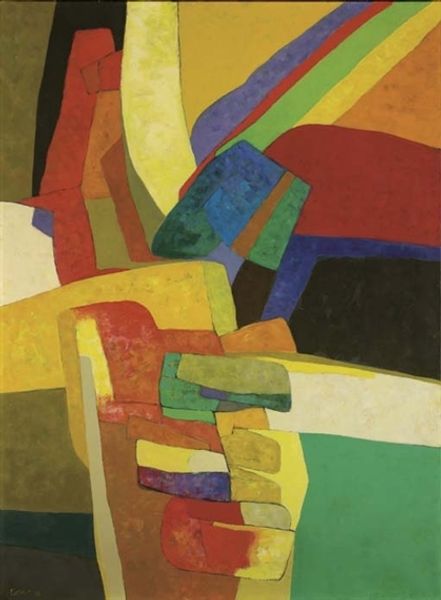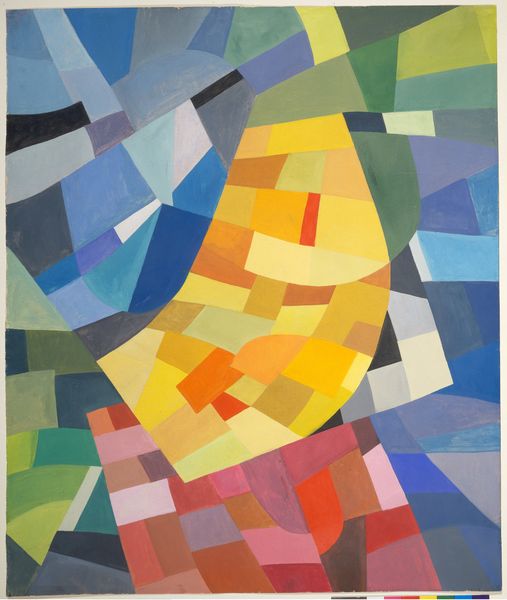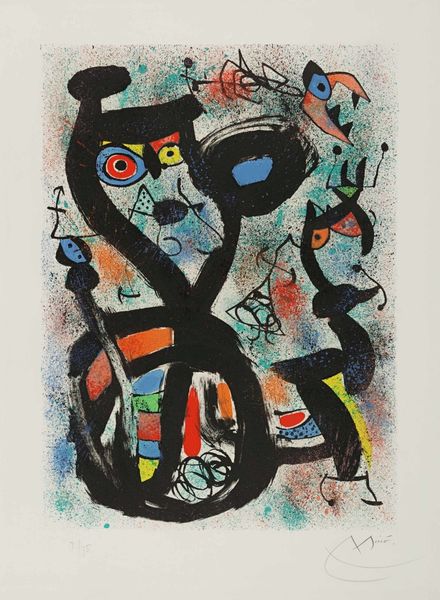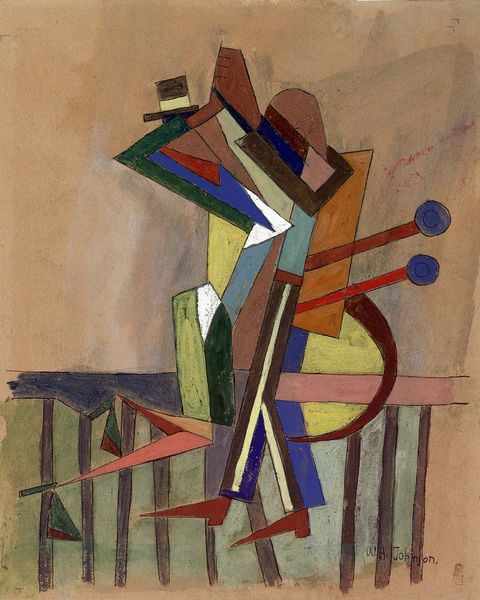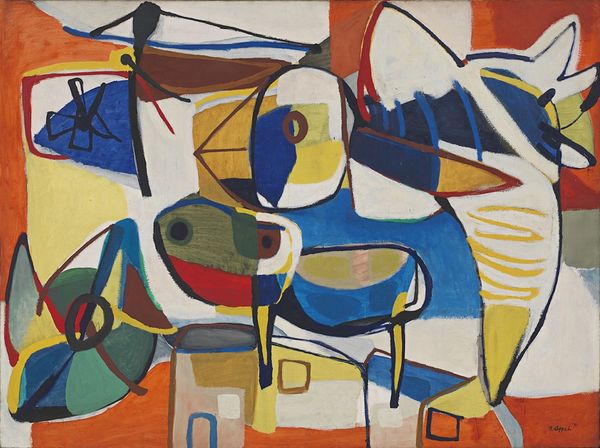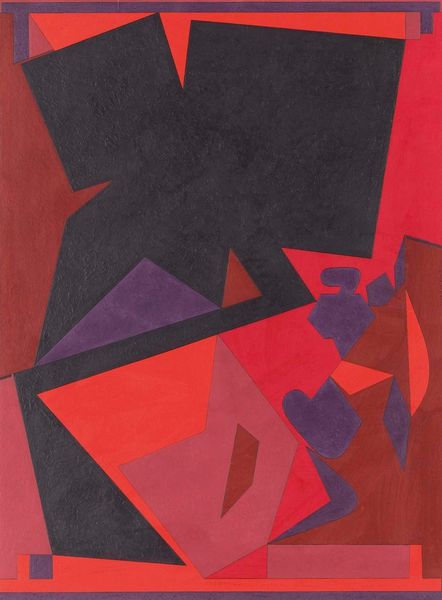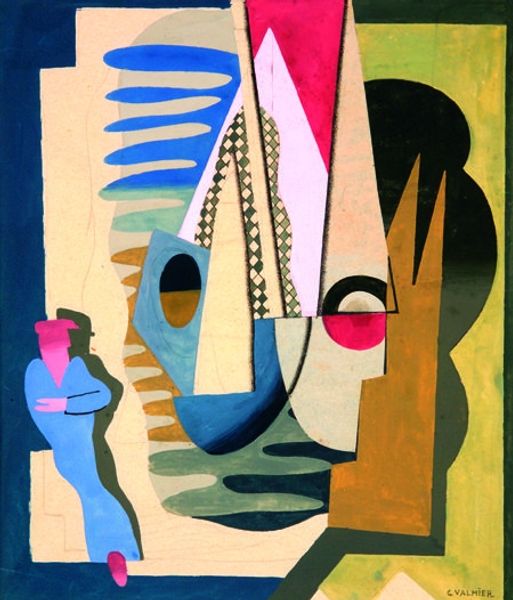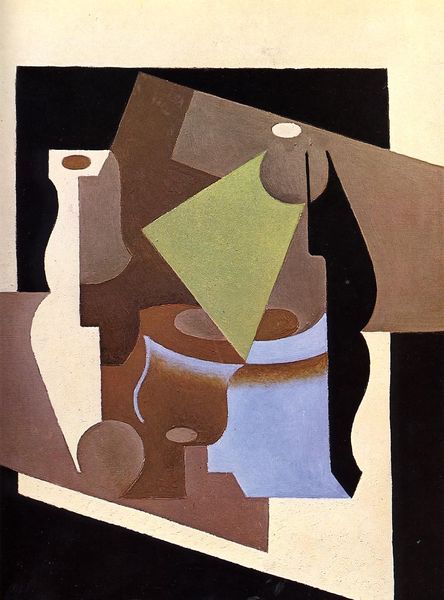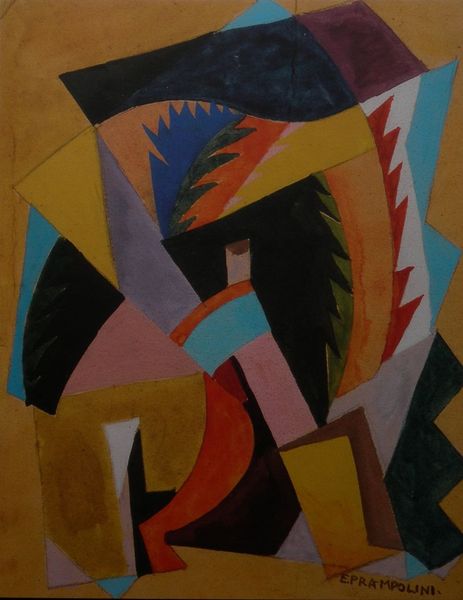
oil-paint
#
portrait
#
self-portrait
#
oil-paint
#
oil painting
#
geometric
#
expressionism
#
expressionist
Copyright: Public domain
Otto Freundlich made this painting, "Head (Self Portrait)," using oil paint in the early twentieth century. He was a German artist working during a period of immense social upheaval, and this work is a powerful reflection of the fragmented nature of identity in the modern world. The painting's cubist style, with its broken planes and distorted perspective, speaks to the influence of artists like Picasso and Braque. But it also reflects the broader cultural anxieties of the time, a sense that traditional values and ways of life were crumbling under the weight of industrialization and war. Freundlich was closely associated with the November Group, a group of radical German expressionist artists and architects during the Weimar Republic. He sought a spiritual renewal of humanity through art. His progressive and avant-garde aesthetic was a direct challenge to the conservative artistic establishment of the time. To understand Freundlich's work more fully, we can consult a range of historical sources, from exhibition catalogues and critical reviews to his own writings and letters. Art is always made in a particular time and place, and its meaning is always shaped by the social and institutional forces that surround it.
Comments
No comments
Be the first to comment and join the conversation on the ultimate creative platform.
